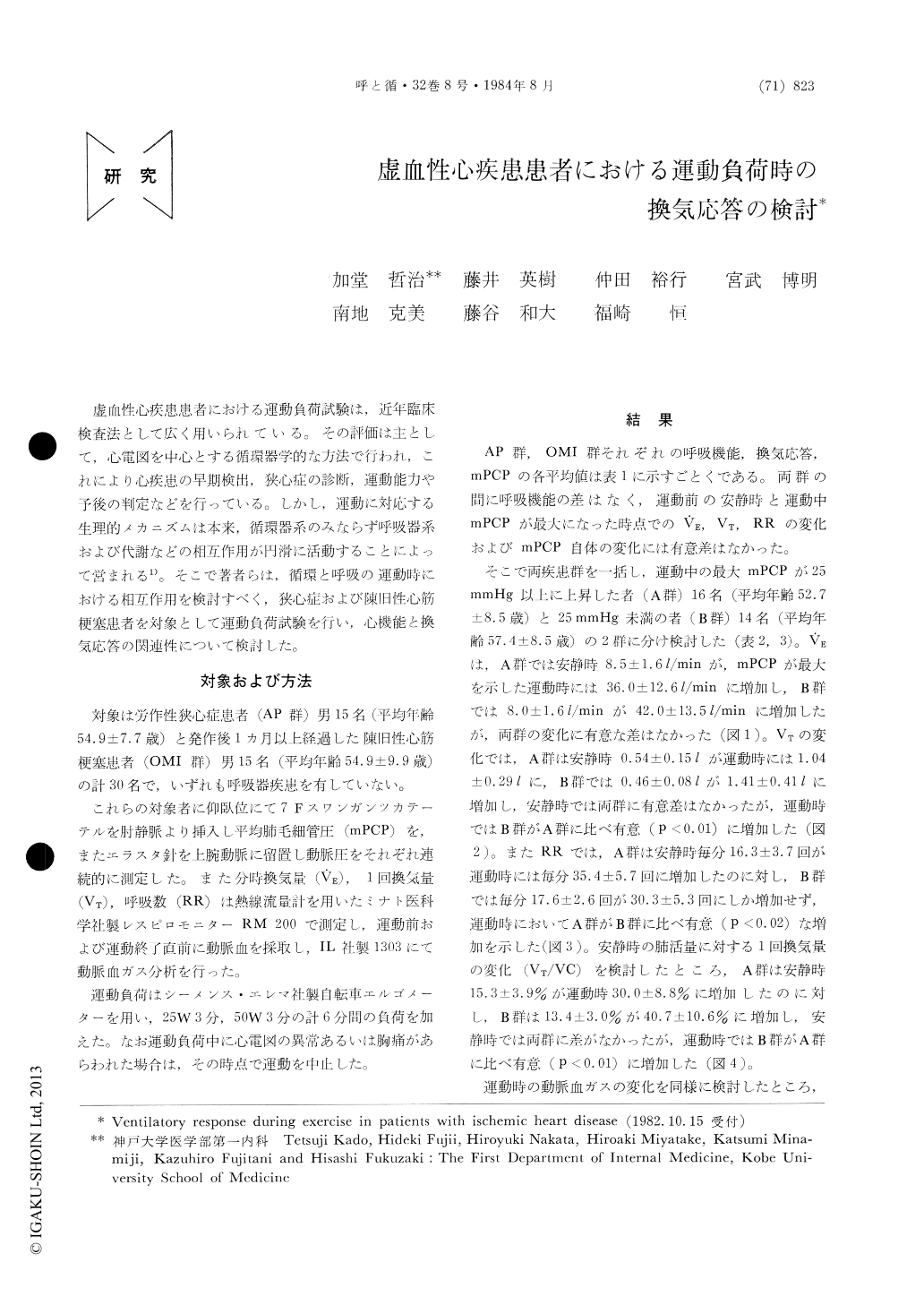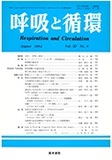Japanese
English
- 有料閲覧
- Abstract 文献概要
- 1ページ目 Look Inside
虚血性心疾患患者における運動負荷試験は,近年臨床検査法として広く用いられている。その評価は主として,心電図を中心とする循環器学的な方法で行われ,これにより心疾患の早期検出,狭心症の診断,運動能力や予後の判定などを行っている。しかし,運動に対応する生理的メカニズムは本来,循環器系のみならず呼吸器系および代謝などの相互何作用が円滑に活動することによって営まれる1)。そこで著者らは,循環と呼吸の運動時における相互作用を検討すべく,狭心症および陳旧性心筋梗塞患者を対象として運動負荷試験を行い,心機能と換気応答の関連性について検討した。
In recent years, many exercise tolerance tests have been performed in patients with ischemic heart disease (IHD), and these studies have been mainly estimated by electrocardigoraphy. However, the studies estimated the changes of respiratory re-sponses during exercise were very rare, although physiologically respiratory functions have great influences on cardiovascular system. The purpose of this study is to evaluate the relationship betweencardiovascular and respiratory responses during exercise in patients with IHD.
The mean pulmonary capillary pressure (mPCP) and ventilatory responses were measured in 15 patients (mean age 54.9 years) with angina pectoris (AP) and 15 patients (mean age 54.9 years) with old myocardial infarction (OMI) by bicycle ergometer exercise. There was no significant difference between AP and OMI in ventilatory responses.
The patients were divided into two groups on the maximum mPCP during exercise : Group A (patients whose maximum mPCP increased more than 25mmHg), Group B (patients whose maximum mPCP increased less than 25 mmHg), There was no significant difference in maximum minute volume (VE) between both groups. Respiratory rates (RR) during exercise in group A were greater than group B. The increment of tidal volume (VT) during exercise in gruop A was significantly lower than group B. There were no significant differences in Pao2, Paco2 and PH during exercise between both groups.
These results suggest that ischemia-induced left ventricular dysfunction increases left ventricular end-diastolic pressure and mPCP, which effect on the lung mechanics mainly consisted of reduced lung compliance. Therefore, in patients with 1HD whose mPCP increase more than 25mmHg, the increment in RR rather than VT mainly contributed to get adequate VE during exercise. We could evaluate the cardiovascular functions in patients with IHD by measuring the ventilatory responses during exercise.

Copyright © 1984, Igaku-Shoin Ltd. All rights reserved.


